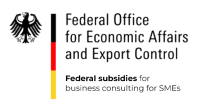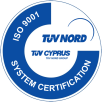Comparison of RoHS and REACH
We often find that sellers are confused by the terms RoHS and REACH. The fact that manufacturers from Asia in particular tend to use these terms synonymously, and can present an RoHS test report for virtually any product, exacerbates this problem.
But that does not mean that this is correct. Both the REACH Regulation and the RoHS Directive restrict the use of certain substances. Even though there are overlaps, the two regulations differ in regard to the product scope, the labeling requirements and the substance restrictions.
This blog post details all the differences between the REACH Regulation and the RoHS Directive.
Scope of the two European regulations
Both regulations restrict the use of certain substances in products. However, the scope of application of the RoHS Directive is significantly smaller, as it only refers to electrical and electronic devices.
If your manufacturer presents an RoHS test report for a non-electrical product, you know right away that you cannot use that. Having only a small number of materials RoHS-tested is relatively cheap for the manufacturer, and unfortunately, most sellers believe that such a test report is enough to allow them to assume that a product is chemically safe.
In the case of an investigation by the authorities, the report will not hold up for the simple reason that the respective product is not subject to the RoHS Directive. Please note: If you affix your own trademark to the product, you are deemed to be a (quasi) manufacturer in the EU. This means that you bear the full responsibility for your product! Manufacturers from third countries, e.g., China, have nothing to fear, which is why they deliberately and unscrupulously use such means to deceive you.
The REACH Regulation
If the term REACH Regulation means nothing to you, we recommend reading part 1 and part 2 of our series on the REACH Regulation. In a nutshell, REACH regulates the use of harmful and hazardous substances in composites and products. The Regulation requires importers and manufacturers to ensure that their products do not present hazards to the environment and human health.
The REACH Regulation covers any and all chemicals, including those used in products. Consequently, there is virtually no product that is not subject to the REACH Regulation. Electronic devices that are covered by the RoHS Directive are also subject to the REACH Regulation!

The RoHS Directive
We have already dealt with the RoHS Directive in more detail in an earlier blog post. Generally speaking, the RoHS Directive restricts the use of various hazardous substances in electrical equipment.
The equipment covered by the RoHS Directive is defined in Annex I, e.g.:
- large and small household appliances
- IT and telecommunication devices
- consumer equipment
- tools
- toys
- recreational and sports equipment
- control instruments
- lighting equipment
- medical equipment
However, electrical equipment that is not specifically listed in Annex I is subject to the RoHS Directive as well! Exceptions from the RoHS Directive are specified in Annex II. Since these products are usually not sold by Amazon sellers, we will not go into detail in regard to these exceptions here.
Differences between REACH and RoHS
While the REACH Regulation restricts the use of a large number of substances, the RoHS Directive only specifies 10 substances the use of which is restricted. This explains why RoHS testing is so much more convenient for manufacturers, in particular if a single material is to be tested for the above-mentioned 10 substances.
The REACH Regulation contains a candidate list for substances of very high concern (SVHC) that may have serious effects on human health and/or the environment. In addition, Annex XVII specifies substances that are considered to be even more harmful, which is why their use is either highly restricted or prohibited outright, e.g., asbestos fibers, arsenic compounds, mercury, chloroform, or nickel and nickel compounds.
If you organize the chemical tests yourself and a lab suggests an SVHC test, this is not sufficient to determine whether your product is market-compliant for the European market!
Labeling and advertising
In regard to labeling and admissible promotional activities, too, there is a lot of information available on the Internet, and not all of it is correct.
REACH Regulation
The REACH Regulation does not provide for labeling requirements for products. However, you are not allowed to use a “REACH lab test” for sales promotion because that would be considered “advertising with obvious facts”.
The situation is different for compounds: Depending on the categorization of a compound, the so-called CLP Regulation may apply and result in additional labeling requirements. Again, you are not allowed to advertise the product as CLP-compliant. The safety data sheet, which is mandatory pursuant to the REACH Regulation, and which must be provided in German for the German market, specifies whether the CLP Regulation applies.

RoHS Directive
If your product falls within the scope of application of the RoHS Directive, the CE marking is mandatorily required. For more information on the CE marking, see part 1 and part 2 of our series on the CE marking.
Some sellers, and Asian manufacturers in particular, sometimes put an “RoHS marking” on the product and the packaging. Unfortunately, this is prohibited and can not only be reported to Amazon by your competitors and cause trouble, but customs and the authorities can also file a complaint against you.
How can Tradavo help you?
The experts at Tradavo are familiar with the complex provisions of the REACH Regulation and the RoHS Directive. You want to make sure that you are not taking unnecessary risks, and that your products comply with the European regulations? Please contact us to arrange for a non-committal initial consultation and learn more about the services we provide.
You need assistance?
It is best to book an appointment directly for a free initial consultation.
Who wrote this article?
As an author, Christina fills the blog section of our website with exciting and informative articles, so that our readers can always take care of product compliance in their company in the most well-informed way.
- Christinahttps://compliance.tradavo.eu/en/author/epywxge/
- Christinahttps://compliance.tradavo.eu/en/author/epywxge/
- Christinahttps://compliance.tradavo.eu/en/author/epywxge/
- Christinahttps://compliance.tradavo.eu/en/author/epywxge/







